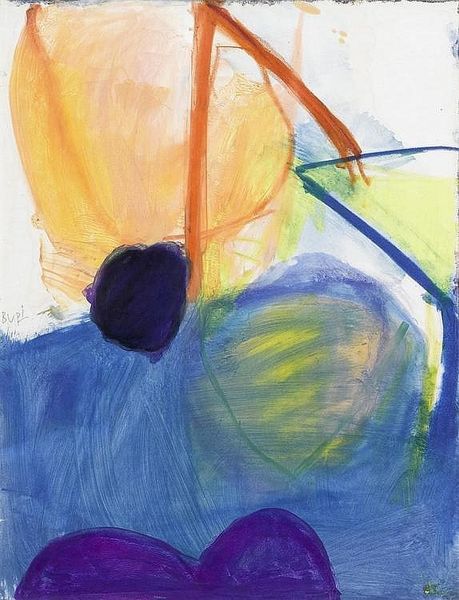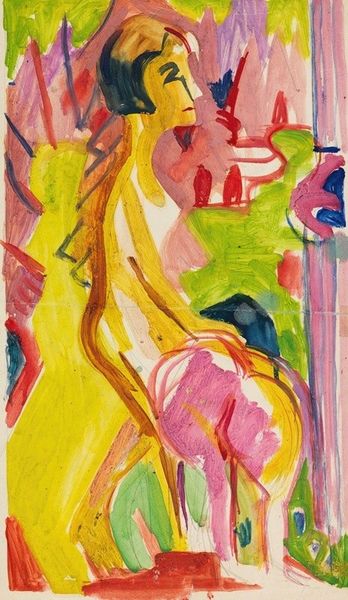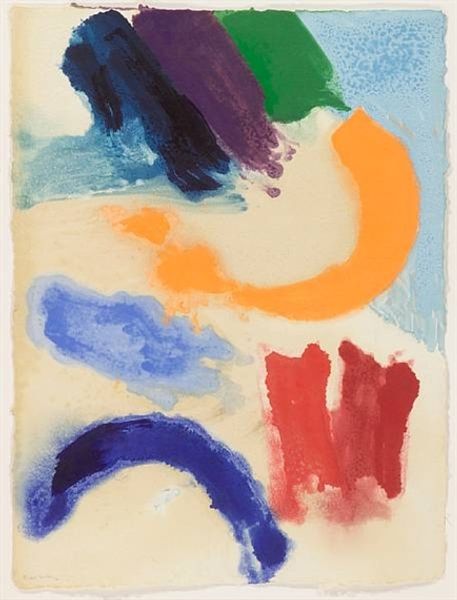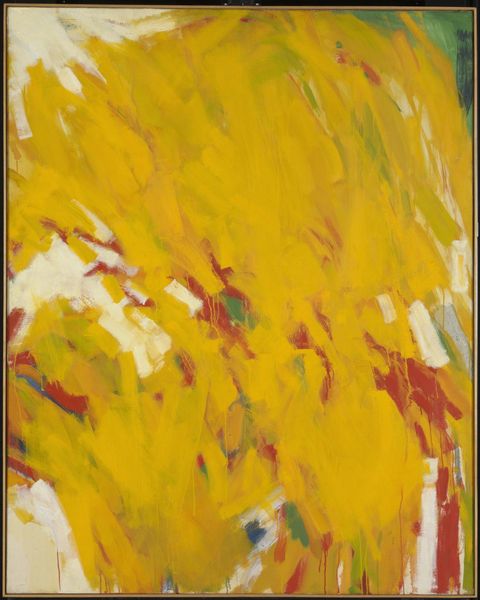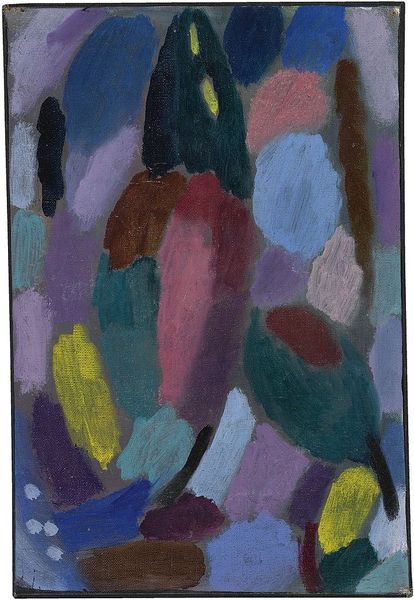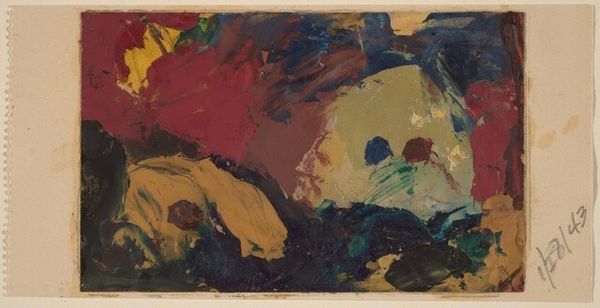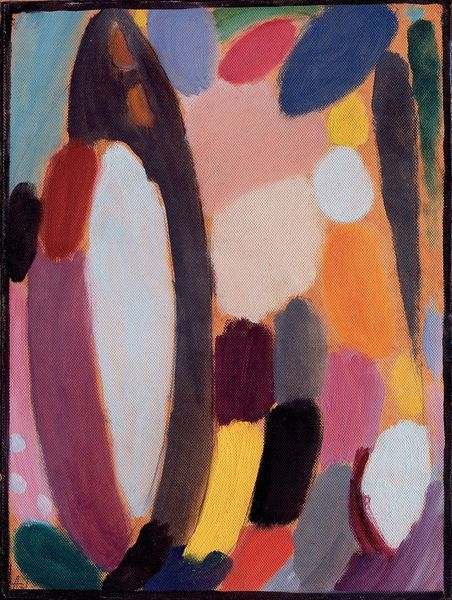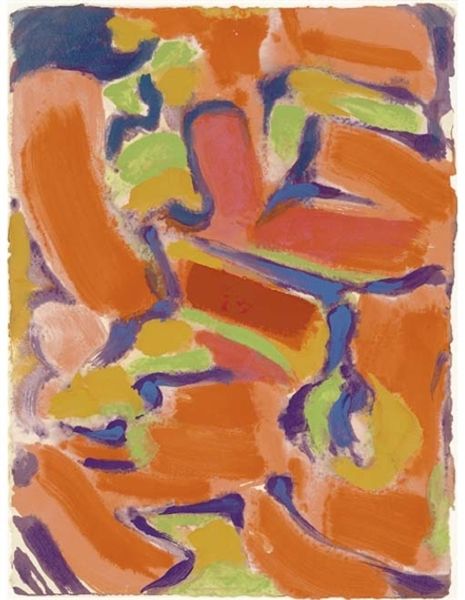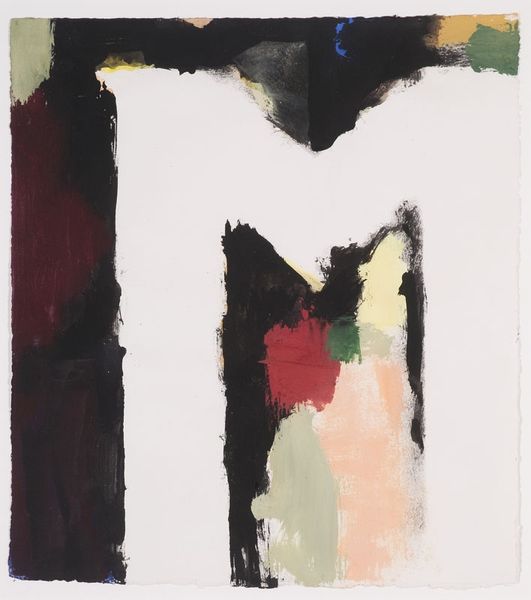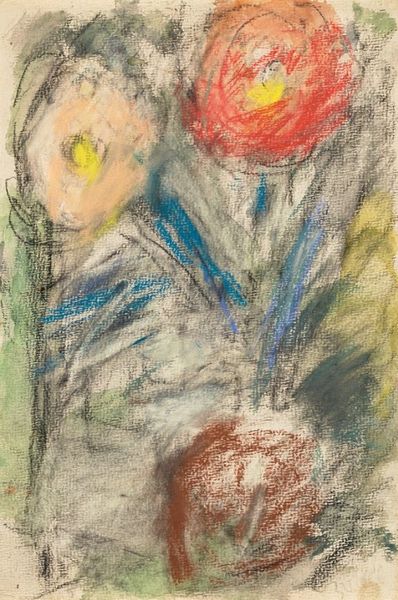
pastel
#
abstract-expressionism
#
abstract expressionism
#
form
#
oil painting
#
abstraction
#
line
#
pastel
Copyright: John Ferren,Fair Use
Editor: Here we have John Ferren’s "Untitled" from 1959, created with pastel. I’m immediately drawn to how the colors seem to dance and push against each other within the frame, yet without recognizable forms. What do you see in this piece? Curator: My attention is focused primarily on the interplay of formal elements. The composition revolves around the juxtaposition of loosely defined shapes and the energetic application of color. Consider the use of pastel; it facilitates a softness, a blurring of edges that is crucial. Editor: How so? Curator: Note the lack of hard lines. This absence creates an ambiguity, where forms emerge and recede simultaneously. It encourages the eye to continuously roam across the surface, constructing its own relationships between the chromatic masses. Ask yourself, how does Ferren use color to generate spatial depth? Editor: I see that the layering of lighter colors over the darker ones creates the illusion of depth, as if some shapes are behind others. But beyond the colors, how do the marks inform your analysis? Curator: Indeed, and observe how the dynamism is also built up with small hatching marks in many different colors. Semiotically speaking, each color patch functions as a sign, hinting at form without fully resolving into one. Consider how Ferren disrupts traditional notions of pictorial space by rejecting mimetic representation. Do you agree? Editor: I do. By abstaining from depicting a tangible subject, he emphasizes the inherent qualities of the medium. I find this dialogue between color and form makes Ferren’s abstraction quite fascinating! Curator: Precisely, a visual poetics achieved through purely formal means. It is art speaking only of itself.
Comments
No comments
Be the first to comment and join the conversation on the ultimate creative platform.
